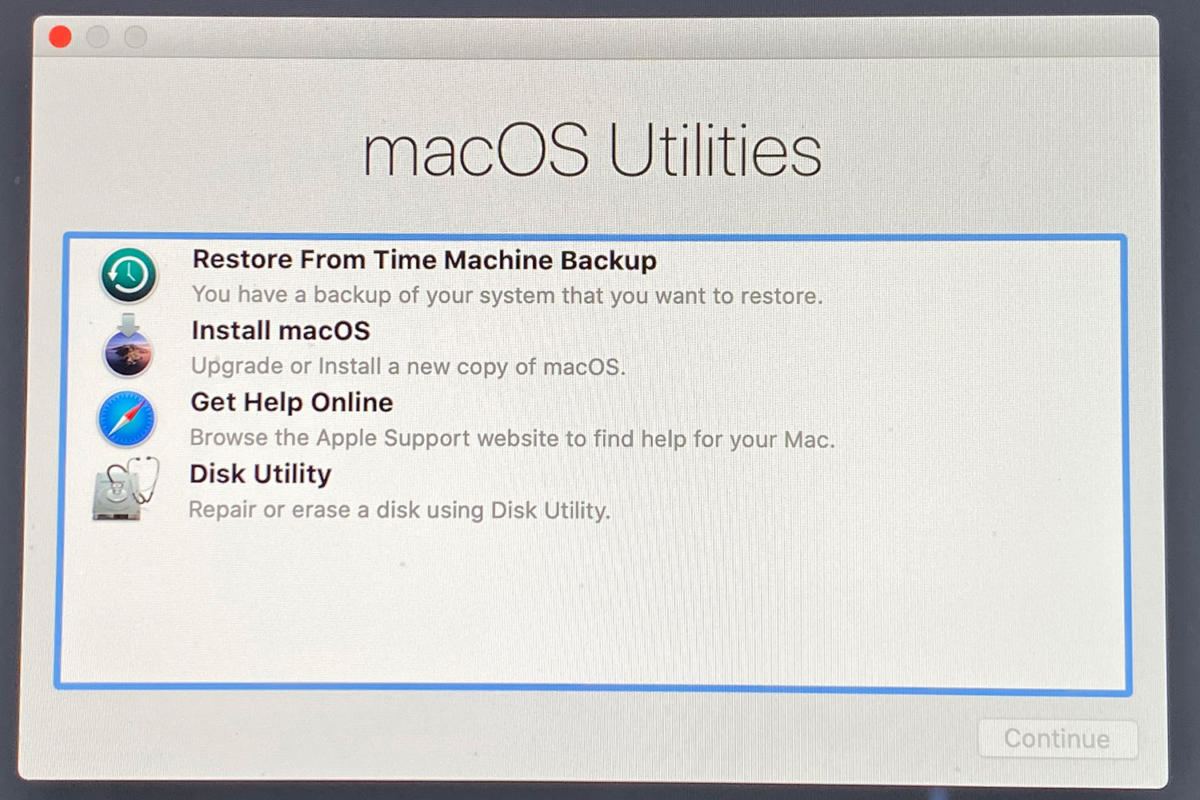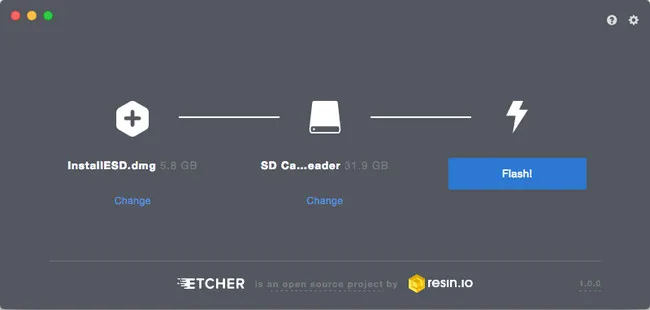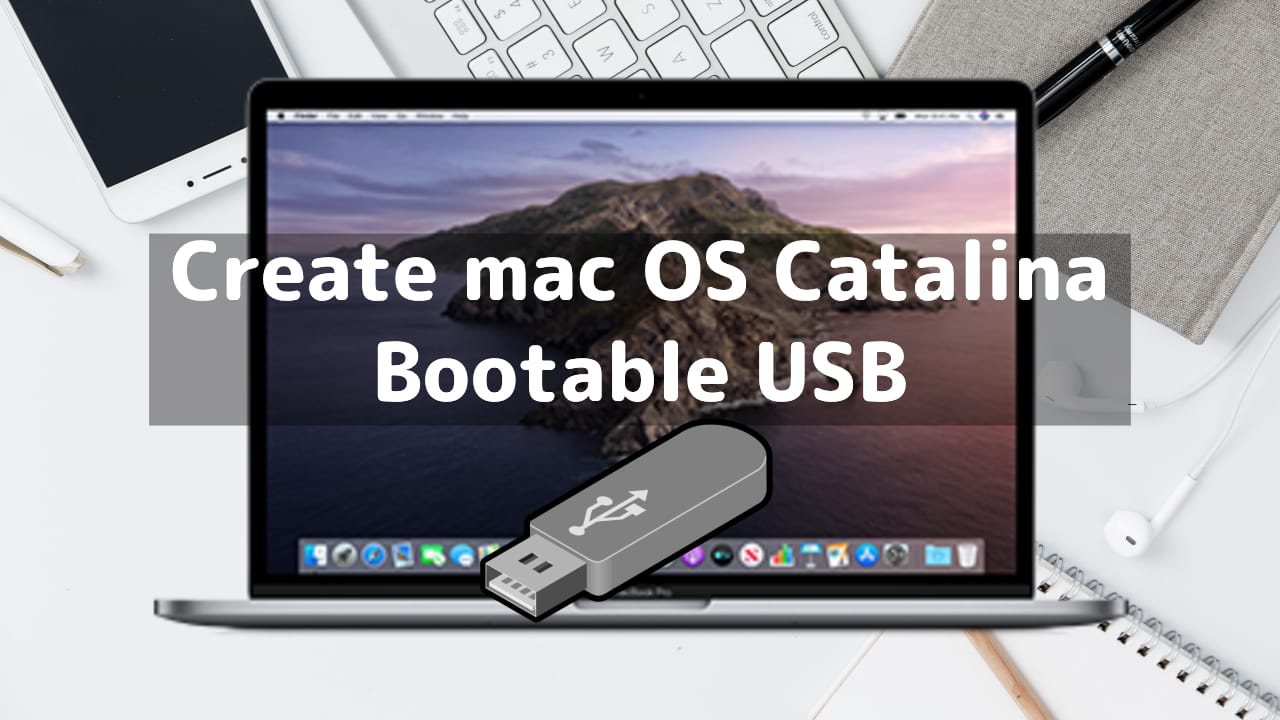Bootable Usb Macos Catalina
In previous tutorial, we wrote a post about creating macOS Catalina bootable USB on Mac, which is a simple tool and there are a couple of free tools to complete the task. You can even use the built-in tool Disk Utility and dd command to do it without installing any third-party apps. However, the situation is much different on Windows 10 because macOS install file (end with .dmg) is not supported by Windows OS. Unlike ISO image, there are few tools on Windows that can handle .dmg files. That's the most challenging part!
So in this article, we will show you how to create macOS bootable USB on Windows 10 and targets macOS Catalina specifically, which is the latest version of Apple macOS and it is easy to download the install file. This will be a great help if there were something wrong with your Mac and a fresh install was demanded. Also if you were a Mac enthusiast and can not afford the price, then it is not a bad choice to build a hackintosh with Catalina.
Before heading to the details of each method, please make sure you have downloaded a copy of Catalina OS dmg file and a working USB drive with more than 12GB storage.
May 05, 2020 Not only macOS High Sierra but you’ll also need a bootable USB drive to install new versions of macOS Mojave, macOS Catalina, and updated versions. A bootable flash drive is an external hard drive or optical disk that is created with a computer operating system and can be used to boot a desktop computer or laptop instead of the Windows. Bootable USB installers offer an easy way to upgrade multiple Macs to macOS Catalina, to perform clean installs of MacOS Catalina, to perform maintenance from a boot disk like formatting disks, modifying disk partitions, and performing restorations, and much more. We’ll walk through how to create a boot USB install drive for MacOS Catalina 10.15. Jan 28, 2021 Here are the steps to create a macOS bootable USB media (Catalina) with GPT partition support on Windows 10 or 7/8.1 to rescue your Mac. Not only macOS High Sierra but you’ll also need a bootable USB drive to install new versions of macOS Mojave, macOS Catalina, and updated versions. A bootable flash drive is an external hard drive or optical disk that is created with a computer operating system and can be used to boot a desktop computer or laptop instead of the Windows.
Method 1: Create macOS Catalina Bootable USB on Windows 10 via DMG Editor
There are more than one solutions to create macOS Catalina Bootable USB on Windows 10 and we will go with easy one first. DMG Editor, a popular app developed by UUByte, is a multi-functional and cross-platform image burning tool that works on Windows, Linux and macOS. It supports creating bootable USB from popular image files, including dmg, iso, zip, img. And it has full support for Linux distros and old versions of Windows OS. macOS support was not available in previous versions. But now, the latest version of DMG Editor adds better support for macOS dmg file. Let's get a try first.
Step 1.Go to UUByte official website and download Windows version of Etcher from there.
Step 2. Run the executable file and complete the installation process. After that, insert an USB drive in Windows 10.
Step 3. Open the installed UUByte DMG Editor by double-clicking on the icon shown on your home screen. Click on the 'Burn' option then. After that, add Catalina .dmg file to the software and click on 'Change' button to choose the inserted USB device.
Step 4. Finally, click on the 'Burn' button to start the dmg burning process. At this time, a progress bar is displayed on the screen and it gives you an estimated calculation for the time remaining.
Bootable Usb Mac Os X Catalina
Step 5. Wait about 10 minutes. It will show you a pop-up message after completing the task successfully.
The process is very quick and easy to execute. But you might have issues running Etcher app on old computers with low profile hardware. Etcher GUI is built primarily on a new Javascript framework called Electron , which consumes a lot of computing resources. So if you were going to use Etcher to create macOS Catalina bootable USB, make sure testing it on a high-profile Windows 10 PC or laptop.
Method 2: Convert .dmg to .iso and Create macOS Catalina Bootable USB

macOS Catalina install image is distributed in .dmg format and Windows 10 has no support. Hen it is almost impossible to read such files in conventional ways. So in this part, we will convert macOS Catalina dmg file into ISO and create a bootable installer by burning the ISO file to USB. This can be done with the help of third-party software.

To execute the method, you need two software. First, you need a special software to convert dmg to ISO. Second, an ISO to USB burning software to make bootable USB from ISO file. To demonstrate, we have used 7 PowerISO & UUByte ISO Editor to create macOS Catalina bootable USB from Windows 10.
Step 1: Download and install PowerISO on Windows 10.
Step 2: Insert your USB drive. Right-click on this peripheral device and choose the option to format it. After a few seconds, you will get the notification of completing the format process.
Step 3: Now, open PowerISO and navigate to Tool menu. From the pop-up list, please click the 'Convert' option.
Step 4: In a pop-up window, click the folder icon to add macOS Catalina dmg file in Source file field. And set an output file name under Destination file section. Next. choose Standard ISO Images (.ISO) from Output image file format.
Step 5: When the ISO file is created successfully. Download and install UUByte ISO Editor. Then click Burn button to open ISO burning Window. Next, add ISO file to the program and select the USB name. Wait for 7 minutes, and a bootable USB is ready!
Step 6: After getting a task completion message on screen, eject the USB and then start installing macOS Catalina from the USB drive.
The solution is simple but may need to purchase a couple of tools for executing the steps. But if you will search smartly on the internet, chances are there that you can get the required tools without paying any cost. However, if you want to bypass using any of the third-party tools, you can create the Catalina OS bootable USB by accessing macOS in a virtual machine.
Method 3: Use TransMac to Create macOS Catalina Bootable USB in Windows 10
TransMac is a single-purpose utility to open Mac disk image from a Windows PC. It's one of the quickest methods to create macOS bootable USB drive from dmg file. However, the support for Catalina is not good as Mojave and High Serrira. Plus, you have to pay for 59 USD to use the burn feature. That's why we mention this app at the end of this post.
Step 1: Download TransMac from the official site and run the .exe file to complete the installation process.
Step 2: Now plug in a USB device into the port. Now right-click on TransMac icon shown on the home screen and then choose to Run as administrator.
Step 3: After landing inside the tool's window, all disk drives will be displayed on the left side automatically. Click File -> Open Disk Image to load macOS Catalina dmf file into the program.


Step 4: Before proceeding further, you need to format your USB device to make it compatible with Mac HFS or APS partition. For doing the same, click on the 'Format Diks for Mac' option. Wait for 30 seconds to complete the process.
Step 5: Right-click on the selected USB disk. From the shown list, click on 'Restore with Disk Image'. If it shows any warning message, just click on the OK button to accept.
Step 6: After that, select the location of saved Mac OS Catalina DMG file and then click on the OK button. Now stay back and look after 20 minutes. You will get ready with a bootable Catalina USB.
TransMac is one of the easiest method to create a bootable macOS Installer USB on a Windows PC. You can use this application to burn any version of macOS operating system file to USB.
Conclusion
To conclude, we would recommend going with either the first or the second method to create bootable macOS Catalina USB. Both are super easy to follow because you don't need to install multiple tools and go through a multi-layer process to meet your requirement.
It does not matter whether you use macOS or Windows 10. It’s just a matter of time until your device will refuse to start, which could happen for many reasons, including (and not limited to) file corruption, hardware failure, and buggy update. If the unexpected happens with an Apple computer, you can use a macOS bootable USB with the installation media to repair it.
This is one of the main reasons you should consider making a macOS bootable USB when your device is working properly. However, if none of your devices (MacBook, MacBook Air, MacBook Pro, iMac, Mac Pro, or Mac Mini) aren’t working when you need them the most, then you can use a PC to rescue your Apple device. You can use a Windows 10, Windows 8.1, or Windows 7 device to quickly create a USB bootable installation media to reinstall macOS Catalina or Big Sur on your Mac.
In this guide, you’ll learn the steps to create a macOS Catalina bootable USB installation on Windows 10, which you can use to reinstall or upgrade the Apple OS.
Requirements
Before proceeding, you’ll need the following:
- Broken Mac computer running macOS (version 10.12, 11, or later).
- A trial copy of the TransMac software.
- One high-quality USB flash drive with 16GB of storage.
- Copy of macOS (DMG file).
Create macOS bootable USB installation media
To create a bootable USB drive with macOS, use these steps:
Bootable Usb Mac Os Catalina Terminal
Download and install TransMac on the Windows 10 device.
Quick note: This is a paid software, but it gives you a 15-day trial, which is more than enough time. (If this works for you and you want to support the developer, you can purchase the full version.)Connect the USB flash drive. (If you have any data on the flash drive, remember to make a backup, as everything on it will be erased.)
Right-click the TransMac app and select the Run as administrator option.
Click the Run button. (If you’re using the trial version, wait 15 seconds.)
Right-click the USB flash drive, select the Format Disk for Mac option from the left navigation pane.
Quick note: You want to do this before creating the bootable media because there is a good chance that the drive was formatted using a Windows device. If this is the case, the chances are that it’s using an MBR partition, and the USB drive needs a GPT partition to work on a Mac.Click the Yes button to format the drive on the warning message.
Confirm a name for the drive. For example, “macOS bootable USB.”
Click the OK button.
Click the Yes button.
Click the OK button.
Right-click the USB flash drive and select the Restore with Disk Image option from the left navigation pane.
Click the Yes button to confirm the erase of the USB flash drive data.
Click the browse button on the right.
Select the .dmg file with the macOS installation files.
Click the Open button.
Click the OK button.
Click the Yes button.
Once you complete the steps, you can now insert the USB flash drive on your Mac computer to install, reinstall, or upgrade the operating system to the latest macOS version, which can be Sierra, Catalina, Big Sur, or higher.
Create a GPT partition on USB flash drive
If the USB flash drive is not working with TransMac, it could still be a partition problem. In this case, you may need to redo the entire process again. However, this time you should use the following steps to use the Diskpart command-line utility on Windows 10 to create the appropriate GPT partition, and then follow the above instructions.
To create a GPT partition on a removable drive, use these steps:
Open Start.
Search for Command Prompt, right-click the top result, and select the Run as an administrator option.
Type the
diskpartcommand and press Enter.Enter the
list diskcommand to view all drives connected to your computer and press Enter.Type the
select diskcommand followed the number assigned for the USB flash drive (for example,select disk 4), and press Enter.Enter the
cleancommand and press Enter.Type the
convert GPTcommand and press Enter.Enter the
create partition primarycommand and press Enter to complete the process.
Once you formatted the USB flash drive with a GPT partition, you can use the instructions mentioned above to use TransMac to create a bootable media, but this time skip steps No. 5 through 10 and continue on step 11.
After the process completes, which can take up to an hour, connect the USB flash drive and power on your Mac holding down the Option key, select the USB drive to begin installing macOS.
If you have problems creating the bootable media, you can get a USB flash drive that comes with macOS Sierra, El Capitan, Catalina, etc., on it with the link mentioned below. (I haven’t tried it personally, but it’s worth the try if nothing works.)
